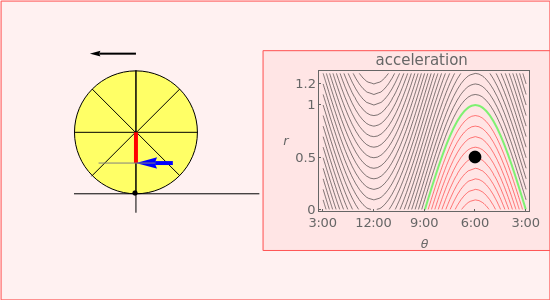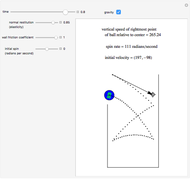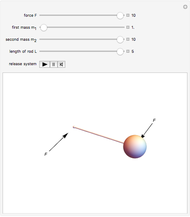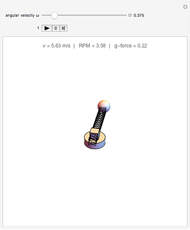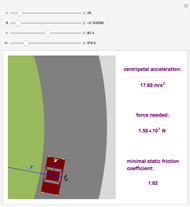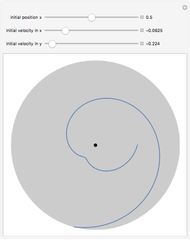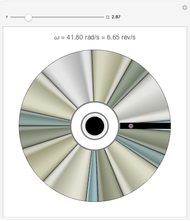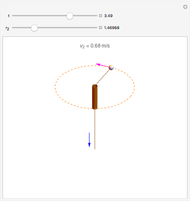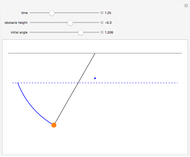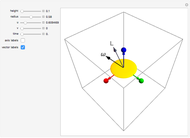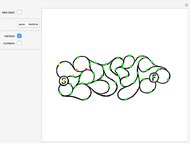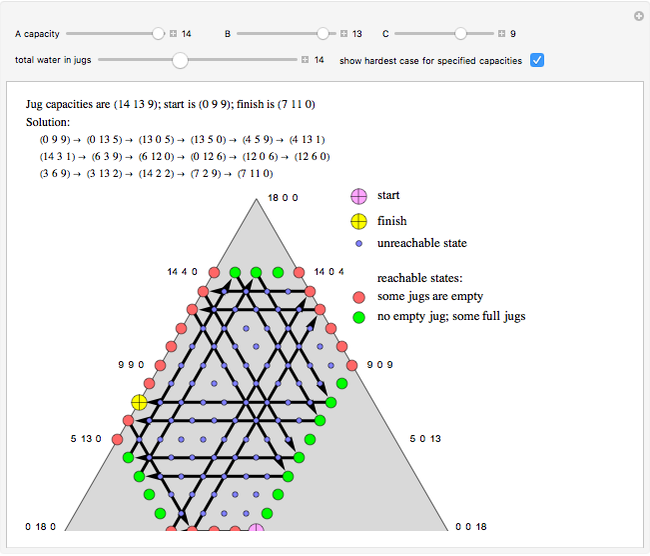The Bicycle Paradox

Requires a Wolfram Notebook System
Interact on desktop, mobile and cloud with the free Wolfram Player or other Wolfram Language products.
Stand on the ground beside a bicycle that faces right and has its pedal at the 6 o'clock position. Push the pedal left (clockwise). Which way will the bike move? Most people will answer that the bike moves forward as the pedal moves clockwise toward 7 o'clock. But, in fact, the bike moves backward and the pedal moves counterclockwise toward 5 o'clock. It is very easy to set this up with a real bicycle and the effect never fails to surprise. This Demonstration allows one to experiment with different pedal locations and radii. When the pedal radius is less than that of the wheel, there are two initial pedal angles for which there is no motion when a tangential force is applied to the pedal. When the pedal is longer than the radius, the torque is increased and the pedal always moves in the direction of the applied force. In the context of this Demonstration, essentially a unicycle, the pedal angles that yield no motion are where the tangent to the radial line to the pedal contains the contact point of the wheel with the ground; that occurs at  and
and  . For a real bicycle the no-motion case occurs when the tangent to the pedal wheel contains the rear wheel's contact point with the ground, roughly at 3:30 for a clockwise pedal force.
. For a real bicycle the no-motion case occurs when the tangent to the pedal wheel contains the rear wheel's contact point with the ground, roughly at 3:30 for a clockwise pedal force.
Contributed by: Besjona Kreka and Stan Wagon (Macalester College) (May 2010)
Open content licensed under CC BY-NC-SA
Snapshots
Details
The first snapshot shows the pedal placed in a static position: tangential force passes through the ground-contact point and there is no motion. The second snapshot shows the case where the pedal's radius is larger than that of the wheel; the paradoxical motion disappears. The third snapshot shows the case of a pedal at the 12:00 position: no paradox.
The formula for the instantaneous acceleration of the wheel when a force  is applied tangentially to the pedal is
is applied tangentially to the pedal is  where
where  is the radius of the wheel,
is the radius of the wheel,  is the distance of the pedal from the center, θ is the angle of the pedal, measured in the usual way with
is the distance of the pedal from the center, θ is the angle of the pedal, measured in the usual way with  being the 3:00 position,
being the 3:00 position,  and
and  are, respectively, the mass and moment of inertia of the wheel. This formula can be derived from the discussions in [1] and [2].
are, respectively, the mass and moment of inertia of the wheel. This formula can be derived from the discussions in [1] and [2].
[1] R. H. Romer, "Which Way Does the Tricycle Go?"
[2] J. D. Nightingale, "Which Way Will the Bike Move?" The Physics Teacher, 31(4), 1993 pp. 244–245.
Permanent Citation
